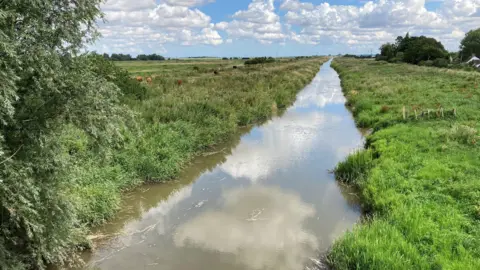Plan to protect habitats under 'intense pressure'
 PA Media
PA MediaA plan to encourage and rebuild wildlife habitats in a nature-depleted county under "intense pressure" is set to be put to the public.
The Cambridgeshire and Peterborough Combined Authority, which brings together the mayor and local councils, is set to approve a draft Local Nature Recovery Strategy at its meeting on Wednesday.
There will be a consultation in July before it becomes one of 48 similar documents published across England setting out priorities and actions for that region.
According to the draft strategy, Cambridgeshire has one of the lowest proportions of land designated for nature in the UK, at 3.3%, and the second-lowest woodland cover at 4.8%.
But it said Cambridgeshire was home to many "internationally important" nature sites, with the Fens supporting populations of European eel and spined loach.
It pointed to invasive species in the county, such as muntjac deer and American mink, and tree diseases that have impacted the Cambridgeshire landscape by killing elm and ash trees.
The county's population had increased by 20% since 2000, the strategy said, putting "intense pressure" on local habitats such as Wicken Fen.
The report said: "The rapidly growing population of Cambridgeshire and Peterborough does not have national parks, national landscapes or large areas of open access downland, forest, moorland or coast on its doorsteps."
Cambridgeshire was also said to have lost 88% of its marsh habitat, 84% of its semi-natural grassland but gained 85% of its woodland between 1930 and 2018.

Part two of the draft plan talked about protecting Cambridgeshire's chalk streams and historic orchards, and for the county's grasslands, woodlands and wetland habitats to be "cherished and managed".
The strategy discussed differences anyone can make, such as gardeners leaving some of their lawn unmown for part of the year, or for farmers to crop less land at the edges of fields.
Each of the 48 strategies will map out areas important for biodiversity, and those with the potential to be important, and produce a local habitat map.
If approved, an eight-week public consultation on the draft strategy will begin on 18 July.
Follow East of England news on X, Instagram and Facebook: BBC Beds, Herts & Bucks, BBC Cambridgeshire, BBC Essex, BBC Norfolk, BBC Northamptonshire or BBC Suffolk.
